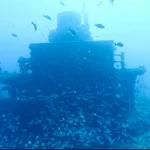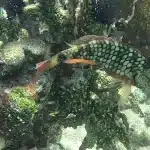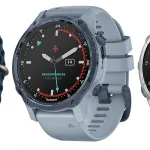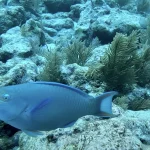Why Shallow Reefs Matter: Unlocking Hidden Treasures
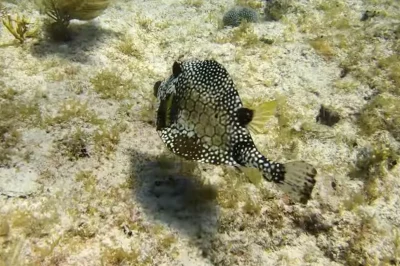
Table of Contents
- Why Shallow Reefs Matter: Unlocking Hidden Treasures
- Bust the Myths: Is Deeper Always Better in Diving?
- Avoid These Common Mistakes When Diving Shallow Reefs
- The Future of Shallow Reef Diving in Key Largo
- Comparing Key Largo’s Iconic Reef Sites: A Data-Driven Dive
- Maximize Your Dive Time: A How-to on Planning Shallow Reef Dives
- Debunking the Shallow vs Deep Dive Debate
- Key Largo’s Marine Life: Spot, Understand, and Protect
Introduction
Key Largo is a premier destination for scuba divers, offering a unique opportunity to explore stunning marine life in shallow waters. With depths ranging from 20 to 40 feet, these reefs are accessible to divers of all skill levels. In this blog post, we provide a comprehensive guide to making the most of your shallow reef diving experience in Key Largo, drawing on data-driven insights and expert tips.
Why Shallow Reefs Matter: Unlocking Hidden Treasures
The Florida Keys, particularly Key Largo, offer several advantages for shallow reef diving, making it ideal for divers of all levels. Here are the key benefits:
Safety and Accessibility
Shallow water and light currents allow divers of all skill levels to safely explore the reef. The average depth of 20–35 feet minimises risks associated with deeper dives, such as nitrogen narcosis or oxygen toxicity. Key Largo’s extensive dive infrastructure ensures easy access to training and guided tours, with numerous operators providing equipment and transportation.
Extended Dive Time
Shallow dives slow nitrogen absorption, enabling longer bottom time for exploration. The reef’s moderate depths also reduce the need for rapid ascents, maximising time spent interacting with marine life.
Enhanced Visibility and Colour
The Keys’ shallow waters typically offer excellent visibility (25–100 feet) due to clear water and minimal suspended sediments. More sunlight reaches these depths, intensifying coral and fish colours, creating optimal conditions for underwater photography.
Marine Biodiversity
Key Largo’s reefs host abundant wildlife, including nurse sharks, green moray eels, sea turtles, and vibrant fish species. Artificial reefs from sunken ships provide additional habitats, supporting ecological diversity.
Training and Skill-Building
Shallow sites like Molasses Reef and French Reef serve as ideal classrooms for beginner divers. Light currents and shallow depths simplify navigation and marine life observation, while commercial operators offer structured courses and guided experiences.
Thermal Comfort
Water temperaturas range from 70°F in winter to 85°F in summer, providing comfortable diving conditions year-round.
Key Largo’s combination of accessibility, biodiversity, and forgiving conditions makes it a premier destination for shallow reef diving, appealing to recreational enthusiasts and technical divers alike.
Bust the Myths: Is Deeper Always Better in Diving?
Shallow reef diving offers stunning views and vibrant marine life, but it comes with its own set of challenges. Understanding and correcting common mistakes can significantly enhance your underwater experience and protect these delicate ecosystems. Here are some of the typical errors beginners make and how to avoid them:
Poor Buoyancy Control
Mistake: Inconsistent buoyancy can lead to sediment disruption, coral damage, and unnecessary energy expenditure.
- Practice Regularly: Training in pools or shallow waters can help improve your buoyancy control through muscle memory.
- Specialised Training: Consider enrolling in courses focused on buoyancy for tailored feedback and effective conservation techniques.
Improper Equalisation
Mistake: Failing to equalise ear pressure frequently can lead to discomfort or even injury during descent.
- Equalise Often: Employ techniques like the pinch-and-blow method every metre or so to avoid discomfort.
- Descend Slowly: Avoid rapid descents to minimise the risk of barotrauma, especially in shallow waters where you might feel rushed.
Rapid Ascents/Descents
Mistake: Rushing through depth changes heightens the risk of decompression sickness and equalisation challenges.
- Control Your Descent: Descend gradually and maintain a steady depth to reduce bubble formation and pressure issues.
- Follow Ascent Protocols: Ascend no faster than 18 metres (60 feet) per minute and incorporate a safety stop at around 5 metres (15 feet) for 3-5 minutes.
Skipping Pre-Dive Checks
Mistake: Neglecting to inspect equipment can lead to emergencies, even in the most familiar underwater environments.
- Buddy System: Always double-check gear like regulators and tank pressure with your diving partner.
- Stay Hydrated: Proper hydration is essential before and after diving to mitigate the risk of dehydration-related issues.
Overconfidence & Overexertion
Mistake: Diving beyond your competence level can jeopardise your safety and enjoyment.
- Know Your Limits: Stick to the certification depth and complexity levels regardless of the environment.
- Air Management: Regularly monitor your air supply to avoid running low during extended exploration of the reef.
By being aware of these common mistakes and implementing the suggested strategies, divers can enjoy safer, more rewarding experiences while contributing to the conservation of marine ecosystems.
Avoid These Common Mistakes When Diving Shallow Reefs
Training and Skill Development
The landscape of shallow reef diving in Key Largo is evolving with a noticeable emphasis on advanced training and skill development. Dive operators are increasingly offering specialised courses, such as Advanced Open Water certifications. For instance, programmes like those at Rainbow Reef Dive Center are designed to enhance divers’ skills while fostering environmental awareness. This trend allows divers to deepen their understanding of marine ecosystems while becoming more competent in shallow diving environments.
Reef Access and Environmental Considerations
Shallow reef sites, typically ranging from 5 to 25 feet deep, ensure accessibility for both snorkelers and scuba divers alike. These locations boast rich biodiversity, featuring vibrant marine life such as fish, moray eels, and seasonal sightings of eagle rays. Guided group dives, which require a minimum of six divers, are expected to remain a popular option, offering structured experiences that both safeguard divers and promote reef conservation. Highlights include guided adventures by operators like Horizon Divers, which emphasise responsible diving practices while navigating these ecosystems.
Industry Innovations and Trends
As the industry shifts, small-group diving experiences are anticipated to become commonplace. Ratios like 7:1 diver-to-guide may be introduced for sites with challenging conditions, enhancing safety and ensuring personal attention. Moreover, there’s a growing commitment among dive operators to focus on reef health. Pre-dive briefings that educate divers about responsible practices, such as minimising their impact on coral ecosystems, will likely be integrated into diving packages. Such measures not only benefit the environment but also enrich the overall diving experience by fostering a greater connection to marine conservation.
The Future of Shallow Reef Diving in Key Largo
Key Largo’s Iconic Reef Sites: A Data-Driven Dive
Key Largo is renowned for its vibrant shallow reefs, specifically known for their marine life diversity and ecological significance. This chapter compares three prominent diving locations: Pennekamp Coral Reef State Park, French Reef (particularly the Amphitheatre area), and Molasses Reef, each offering unique underwater experiences.
Pennekamp Coral Reef State Park
This park features dive depths ranging from 18 to 35 feet, providing a perfect environment for diverse marine habitats. Notable species include parrotfish, stingrays, eagle rays, nurse sharks, reef sharks, barracudas, and various snapper and angelfish. The park is also home to the iconic Christ of the Abyss statue, among other fascinating features like sea fans and fire corals.
As part of the Florida Keys National Marine Sanctuary, Pennekamp is designed for controlled access, which helps mitigate the impact of over-visitation, allowing its ecosystems to thrive while still welcoming divers seeking rich marine biodiversity.
French Reef (Amphitheatre Area)
French Reef, specifically the Amphitheatre, provides depths of 25 to 30 feet, ideal for both novice and experienced divers. The site hosts a “rainbow” diversity of coral species and colourful sponges, making it visually spectacular. Marine life includes schooling fish like grunts and snappers, alongside unique structural elements such as the Christmas Tree Cave and Hourglass formations, which contribute to the area’s ecological diversity.
The protected status of this reef offers some safeguard against human activity, though its popularity presents challenges. Conservation awareness among divers is crucial for preserving its rich underwater environment.
Molasses Reef
Famous for its legendary diving experiences, Molasses Reef varies in depth, with several areas within the shallow range. While detailed species lists are not extensively documented, divers often encounter a mix of colourful reef fish and occasional visitors such as larger pelagic species. Being part of the Florida Keys National Marine Sanctuary, it enjoys stricter ecological protections, contributing to ongoing conservation efforts.
Comparative Analysis
- Pennekamp Coral Reef State Park: Offers the most diverse species list; however, its accessibility may lead to higher visitor numbers.
- French Reef (Amphitheatre Area): Rich in coral diversity, but faces challenges due to its popularity.
- Molasses Reef: A less detailed species profile but renowned for diverse aquatic experiences.
2025 Ecological Impact Factors
- Sanctuary Protections: All sites are under the Florida Keys National Marine Sanctuary, enforcing protections like fishing bans to safeguard marine habitats.
- Dive Operator Practices: Local companies promote reef-safe diving practices, significantly contributing to the ecological health of these popular spots.
- Visitation Management: With over 35 dive locations within Pennekamp, tourist pressure is effectively distributed, mitigating stress on specific reefs.
For divers passionate about marine conservation, choosing guided tours with operators that respect sanctuary rules is essential to protect these breathtaking underwater ecosystems.
Comparing Key Largo’s Iconic Reef Sites: A Data-Driven Dive
To maximise your dive time while exploring the stunning shallow reefs of Key Largo, careful planning and preparation are essential. Here’s a comprehensive guide to help you enhance your shallow diving experience in this beautiful underwater paradise.
1. Choosing Dive Sites
Key Largo is home to some of the most vibrant shallow reefs, which are ideal for divers looking to explore marine life without venturing too deep. Consider these popular dive sites:
- Molasses Reef: Known for its diverse marine life and coral formations, this reef typically ranges from 20 to 30 feet in depth, offering clear visibility.
- French Reef: Another premier site, featuring striking coral gardens at depths of about 25 to 35 feet.
- Elbow Reef and Carysfort Reef: These sites are slightly deeper but still within the shallow range, making them accessible for most divers.
For those interested in wreck diving, consider the SS Benwood, which lies at about 25 feet. It’s an excellent introduction to wreck dives without going too deep.
2. Preparation Checklist
- Certification and Refreshers: Ensure you have an open-water certification. If it’s been over a year since your last dive, consider enrolling in a refresher course offered by local dive shops to boost your confidence and skills.
- Gear Rental: Most dive operators provide necessary equipment such as tanks, weights, and belts. Be sure to confirm availability for BCDs, regulators, and wetsuits.
- Weather Conditions: Keep an eye on the weather forecasts as you plan your dives. Ideal conditions often include calm seas, especially since dive boats typically travel 4-7 miles offshore.
3. Booking with Local Operators
Selecting the right dive shop can significantly enhance your diving experience. Here are some trusted local operators:
- Horizon Divers: Offers tailored two-tank trips that may combine reef and wreck dives, ensuring an excellent overall diving experience.
- Key Largo Scuba Diving: Provides access to many shallow reefs and wreck dives, making their daily trips a convenient option.
- Rainbow Reef-based Operators: These often offer guides for dives, enhancing safety and the likelihood of encountering diverse marine life.
4. Essential Tips
- Use a Guide: Local dive guides can help navigate the reefs and enhance your experience by pointing out interesting species and ensuring safety.
- Nitrogen Monitoring: Be mindful of your dive time and depth; shallow dives generally permit longer durations without exceeding nitrogen limits.
- Respect Marine Life: Follow snorkeling and diving etiquette by not touching corals or disturbing underwater habitats, which helps preserve the vibrant ecosystems of Key Largo.
By following these guidelines and preparing adequately, you’ll ensure that your shallow reef diving adventure in Key Largo is both enjoyable and memorable.
Maximize Your Dive Time: A How-to on Planning Shallow Reef Dives
Debunking the Shallow vs Deep Dive Debate
In the scuba diving community, the debate between shallow and deep diving often leads to a variety of opinions. Understanding the unique advantages and drawbacks of each option is essential for divers seeking the most fulfilling underwater experience.
Advantages of Shallow Diving
- Extended Dive Times: Shallow dives, usually at depths of 30-40 feet, allow for significantly longer bottom times. This is primarily due to slower oxygen consumption and reduced nitrogen absorption compared to deeper dives, enabling divers to enjoy the underwater world without the pressure of short air supplies.
- Improved Visibility: Shallow waters often yield better visibility, making it easier for divers to observe vibrant coral reefs and diverse marine life. Critical habitats are typically accessible at shallower depths, enhancing the overall experience.
- Lower Physical Demands: Diving in shallower waters typically requires less strenuous physical exertion, allowing divers to conserve energy and focus on enjoying their surroundings.
- Reduced Risk of Decompression Sickness: Since shallow dives come with lower ambient pressure, the risk of decompression sickness is notably less, making them a safer alternative for recreational divers.
Disadvantages of Shallow Diving
- Increased Risk of Shallow Water Blackouts: Divers may experience shallow water blackouts, potentially caused by hyperventilating before diving or holding their breath too long, leading to oxygen deprivation issues.
- Potential Hazards: Murkiness or obstacles in shallow waters can increase the risk of accidental collisions, necessitating heightened environmental awareness.
- Buoyancy Control Challenges: Divers must master buoyancy control to navigate the rapid changes in pressure associated with shallow diving, which can complicate the experience.
Advantages of Deep Diving
- Access to Unique Ecosystems: Deep diving opens up a world of exploration, allowing divers to interact with unique ecosystems, shipwrecks, and deeper marine species that don’t venture into shallower waters.
- Predictable Conditions: At greater depths, divers often encounter more stable environments that mitigate surface turbulence, providing a more controlled diving experience.
- Less Risk of Shallow Water Blackouts: With proper techniques and training, the blackout risk associated with deep diving is reduced due to managed breathing and improved oxygen use practices.
Disadvantages of Deep Diving
- Shorter Dive Durations: The increased ambient pressure at depth accelerates oxygen consumption, which leads to reduced bottom times for divers.
- Decompression Obligations: Deep dives necessitate compliance with strict decompression protocols, essential for preventing nitrogen buildup in the body.
- Advanced Training Requirements: Individuals wishing to engage in deep diving must undergo rigorous training to develop the skills necessary for managing more complex diving situations.
Ultimately, whether a diver opts for shallow or deep experiences, understanding the risks and advantages tied to each will significantly enhance their enjoyment and safety. Both diving methods offer unique insights into underwater exploration, catering to diverse preferences among scuba diving enthusiasts.
Debunking the Shallow vs Deep Dive Debate
Key Marine Species
Key Largo’s underwater ecosystem is a vibrant tapestry of marine life, attracting divers eager to explore its shallow reefs. Among the fascinating inhabitants, specific species stand out for their uniqueness and the need for preservation.
1. Octopuses
- Caribbean Reef Octopus (Octopus briareus) – This species is commonly found hiding in reef crevices or sandy holes, often seen during dives as it emerges from its den.
- Common Octopus (Octopus vulgaris) – Known for its intelligence, this species has a relatively short lifespan, with female octopuses typically dying shortly after laying eggs.
2. Sea Turtles
Protected under the Endangered Species Act, the Florida Keys is home to a diversity of sea turtles, including:
- Green Turtle – Usually found in seagrass beds, they play a vital role in maintaining the health of these ecosystems.
- Loggerhead Turtle – Recognisable by its large head, this species feeds primarily on hard-shelled prey.
- Hawksbill Turtle – Known for their beautiful shell patterns, they are crucial for coral reef health as they help control sponge populations.
3. Queen Conch
Recognisable by its large, spiralled shell adorned with short spines and a characteristic pink lip, the Aliger gigas has been heavily protected in Florida waters to prevent overharvesting.
4. Reef Fish and Invertebrates
- Fish: Look out for snappers, groupers, and parrotfish, key players in the reef ecosystem.
- Invertebrates: Divers may encounter a variety of species, including anemones, shrimp, sea stars, and crabs, such as the bandeye hermit crab.
Preservation Guidelines
- Avoid Disturbance: Do not touch or remove any octopuses, conch, or turtles. Observing these creatures from a safe distance helps preserve their natural behavior.
- Depth and Anchoring: Always stay within safe diving limits and avoid anchoring on reefs to prevent damaging these delicate ecosystems.
- Support Conservation: Familiarise yourself with Florida Fish and Wildlife Conservation Commission (FWC) regulations, especially regarding the prohibition of harvesting protected species like queen conch.
- Education: Utilise local identification guides, such as those provided by the FWC, to enhance your diving experience and support marine conservation efforts.
Key Largo’s Marine Life: Spot, Understand, and Protect
Shallow reef diving in Key Largo is an unparalleled adventure for scuba enthusiasts, where divers can witness the vibrant underwater ecosystem without plunging into deeper waters. The area is known for its abundance of marine life, including eagle rays, parrotfish, sea turtles, barracudas, and nurse sharks. Notably, spots like North Dry Rocks, with depths averaging 10-15 feet, provide opportunities to see groupers, lobsters, crabs, and various reef fish in their natural habitat.
Engaging in shallow diving supports coral conservation efforts, as many operators participate in coral restoration projects that help maintain the health of these ecosystems. For divers, there are practical benefits to exploring these shallower depths. Not only does it allow for more relaxed dive experiences, but it also increases the likelihood of observing larger marine creatures such as eels and bigger sharks, which are frequently spotted in slightly deeper waters (8-15 feet).
Responsible Diving Tips
- Buoyancy Control: Maintaining neutral buoyancy is crucial while diving in shallow waters. Divers should practice a horizontal posture, keeping their feet elevated, to minimise the risk of damaging the fragile coral reefs.
- Use Mooring Systems: It’s important to use designated mooring buoys instead of dropping anchors, which can severely damage coral structures. Mooring systems are often marked, making it easier for divers to navigate and protect the reefs.
- Optimal Diving Times: The best visibility (between 25 and 35 feet) typically occurs during spring (March to May) and early summer (June to August), making these the ideal times for diving trips.
- Conservation Participation: Joining organised coral restoration dives allows divers to contribute directly to the preservation of reefs, enhancing both their diving experience and the environment.
Key Locations and Conditions
- North Dry Rocks: This area is a Marine Sanctuary with multiple mooring buoys and is home to a diverse range of fish, making it popular among divers.
- Dive Depth: The depth range of 10-15 feet here is perfect for both novice and seasoned divers, providing rich experiences with marine wildlife.
- Dive Centres: Local operators such as Sea Dwellers offer guided tours that focus on eco-friendly practices, ensuring a responsible diving experience.
Sources
- Florida Keys – A Dive Wonderland
- Traveling With Scuba Jay – Scuba Diving in Key Largo
- Scuba Diving – Dive Florida Keys: Value, Beauty and Resources
- Dive Curacao – Common Mistakes in Scuba Diving
- Dewi Nusantara – Common Mistakes Beginners Make When Scuba Diving
- Euro Divers – How to Avoid New Diver Mistakes
- Rainbow Reef Dive Center
- Horizon Divers

